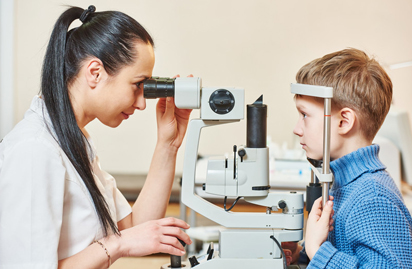
One in ten children may be at a risk for developing an undiagnosed vision problem. The good part is that most such diseases can be treated if diagnosed on time through an eye exam. Poor vision can result in lower grades, weakened self-confidence and decreased self esteem. That’s why physicians recommend that kids receive full, dilated eye exams at 6 months of age, and at 3 years, 5 years and every two years thereafter.
Common Indicators of Vision Problems in Children
Parents should be watchful for these common indicators of vision problems in children:
- Frequently rubbing the eyes
- Squeezing or squinting the eyes
- Titling or turning their head to look at objects
- Disinterest in reading or viewing distant objects
- Wandering or crossed eyes
Don’t delay seeing the pediatrician if you think your kid has any of these symptoms. Eye conditions that affect children include:
- Amblyopia (lazy eye)
- Strabismus (crossed eyes)
- Ptosis (drooping of the eyelid)
- Color deficiency (color blindness)
- Refractive errors (nearsightedness, farsightedness and astigmatism)
It is estimated that over 12 million children in the U.S. suffer from vision impairment, and eye injuries are one of the top causes of vision loss in children. Sports-related eye injuries are estimated to be around 42,000 each year and children make up the majority. Other statistics on vision problems among children are also worrying:
- Nearly 25 percent of school-aged kids have vision problems.
- For kids in the ages 3 to 5, one in 20 has a difficulty that could result in permanent vision loss if left untreated.
- The American Academy of Ophthalmology notes that 80 percent of preschoolers are not receiving timely vision screenings.
Children’s Eye Health and Safety Month is the right time to spread the message of eye safety in children. This is also the ideal time to discuss the importance of eye safety with children. They should be encouraged to wear protective eyewear while engaging in sports or recreational activities. See that they avoid toys with sharp or protruding parts.
Observe Children’s Eye Health and Safety Month by including a comprehensive eye exam in your list of things-to-do before school starts and teaching your children the importance of healthy vision.